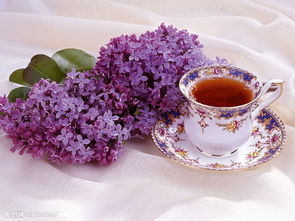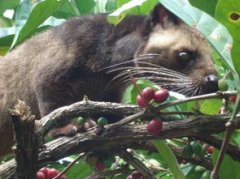What is the basic knowledge that coffee beginners must know?
"Coffee"(the word comes from a small Ethiopian town called kaffa, which means "strength and passion" in Greek). Tea, coffee and cocoa are known as the world's three major drinks. Coffee tree is a small evergreen tree belonging to Rubiaceae. Coffee for daily drinking is made from coffee beans with various cooking appliances. Coffee beans refer to the nuts in the fruit of coffee tree and are roasted by appropriate roasting methods. There are other books under this name.

explain
1. English [coffee]
2. Small evergreen tree or shrub of tropics and subtropics. Leaves long ovate, white flowers, dark red berries. There are small fruit, medium fruit, large fruit coffee and so on. The seeds are fried and ground into a powder that can be used to make a beverage, which has an exciting effect and is native to Ethiopia.
3. Coffee beans [Blue Mountain, Cubita, Mocha, Naga Snow Fly... leader]
4. Powder made from coffee seeds
5. coffee beverage
6. coffee biscuit made from ground coffee beans
7. Coffee cold drink: coffee as raw material, in the summer, is the people's love.
History of Coffee
There are many different legends about the origin of coffee. Among them, the most common and popular story is the story of shepherd coffee. Legend has it that there was a shepherd who happened to find his sheep jumping and dancing when he was shepherding. On closer inspection, it turned out that the sheep ate a red fruit to cause funny behavior. He tried to pick some of this red fruit back to boil, did not expect the room full of fragrance, boiled juice after drinking is more energetic, refreshing, since then, this fruit has been used as a refreshing drink, and quite popular.
The Arabs of ancient times first dried and boiled coffee beans and drank the juice as a stomach medicine, thinking it would help digestion. Later, coffee was found to have a refreshing effect. At the same time, due to the strict prohibition of Islamic drinking, coffee was used instead of alcoholic beverages as a refreshing drink and often drunk. After the fifteenth century, Muslims who went on pilgrimage to Mecca brought coffee back to their places of residence one after another, so that coffee gradually spread to Egypt, Syria, Iran and Turkey. The arrival of coffee in Europe was attributed to Turkey's Ottoman Empire at the time, and because the coffee-loving Ottoman army marched west to Europe and stayed there for several years, leaving behind a large supply of coffee beans when the army finally withdrew, the people of Vienna and Paris were able to develop European coffee culture with these coffee beans and cooking experience gained from the Turks. War, which was supposed to be conquest and destruction, unexpectedly brought cultural exchange and even fusion, which the rulers did not expect.
Coffee is well known in the West for 300 years, but in the East it has been popular as a drink at all levels of society for much longer. Coffee's earliest and most exact date is the eighth century BC, but as early as Homer and many ancient Arab legends, it has been described as a magical, dark, bitter, and highly stimulating drink. Around the 10th century AD, Avicenna (980-1037) used coffee as a medicine to cure diseases. There is also a curious story from the 15th century about a Yemeni shepherd who saw a flock of goats dropping reddish berries from a bush. Soon the goats became agitated and excited, and the shepherd reported the incident to a monk The monk boiled some berries and distilled them into a bitter, strong drink that drove away drowsiness and drowsiness.
Although coffee was discovered in the Middle East, the coffee tree originated in a region of Africa now Ethiopia called Kaffa, from which coffee spread to Yemen, Arabia and Egypt, where coffee developed rapidly and quickly became popular in people's daily lives.
By the 16th century, early merchants were selling coffee in Europe, introducing coffee as a new drink into Western customs and life. The bulk of coffee exported to European markets comes from Alexandria and Smyrna, but growing demand, high tariffs imposed at import and export ports, and improved knowledge of the coffee tree growing sector have led dealers and scientists to experiment with transplanting coffee to other countries. The Dutch transplanted coffee trees in their overseas colonies (Batavia and Java), the French in Martinique (Latin America) in 1723, and later in the Antilles; later the British, Spanish, and Portugal began to invade tropical coffee growing areas in Asia and America. Coffee cultivation began in northern Brazil in 1727, but poor climatic conditions gradually moved the crop to other regions, initially Rio de Janeiro, and finally to Sao Paulo and Minas (circa 1800-1850), where coffee found its optimal growing environment. Coffee cultivation grew here until it became Brazil's most important economic source.
It was between 1740 and 1850 that coffee cultivation reached its greatest popularity in Central and South America.
Although coffee originated in Africa, cultivation and household consumption are relatively recent. In fact, it was the Europeans who brought coffee back to its roots and introduced it to their colonies, where it thrived thanks to favourable land and climatic conditions.
main component
caffeine
It has a particularly strong bitter taste and stimulates the central nervous system, heart and respiratory system. Moderate caffeine can also reduce muscle fatigue and promote digestive secretion. Because it promotes kidney function, it has a diuretic effect and helps the body expel excess sodium ions from the body. Too much caffeine can lead to caffeine poisoning.
tannic acid
Boiled tannins break down into pyrochloric acid, so coffee brewed too long will taste worse.
fatty
The most important of these are acidic fats and volatile fats.
acid fat
That is, fat contains acid, and its strength varies according to the type of coffee.
volatile fatty
It is the main source of coffee aroma, and it is a substance that emits about forty aromatic substances.
protein
The main source of calories is not a high proportion. Coffee powder protein in brewing coffee, most will not dissolve out, so intake is limited.
sugar
Green coffee beans contain about 8% sugar, most of which will be converted to caramel after roasting, making coffee brown and combining with tannins to produce sweetness.
fiber
The fibers of the raw beans will carbonize after roasting and combine with caramel to form the color tone of coffee.
minerals
Contains a small amount of lime, iron, phosphorus, sodium carbonate and so on.
Table of Nutritional Components of Coffee
Each 100g coffee bean contains 2.2g water, 12.6g protein, 16g fat, 46.7g carbohydrate, 9g cellulose, 4.2g ash, 120mg calcium, 170mg phosphorus, 42mg iron, 3mg sodium, 0.12g vitamin B2, 3.5mg niacin, 1.3g caffeine, 8g tannin. Each 100g coffee extract contains 99.5g water, 0.2g protein, 0.1g fat, 0.1g ash, trace carbohydrate, 3mg calcium, 4mg phosphorus, 2mg sodium, 0.01mg vitamin B2 and 0.3mg niacin. Dissolve 10 grams of coffee in hot water, caffeine content is 0.04 grams, tannin content is 0.06 grams.
Important Notice :
前街咖啡 FrontStreet Coffee has moved to new addredd:
FrontStreet Coffee Address: 315,Donghua East Road,GuangZhou
Tel:020 38364473
- Prev

Coffee and the Seven benefits of drinking White Coffee
(1) White coffee contains certain nutrients, nicotine in coffee contains vitamin B, and roasted coffee beans contain more than raw coffee beans. Others also contain free fatty acids, caffeine, tannic acid and so on. (2) White coffee is good for the skin. Coffee can promote metabolic function, activate digestive organs, and improve skin roughness. In addition, taking a bath with coffee powder is a kind of thermotherapy.
- Next

Basic knowledge of boutique coffee world-famous brands of coffee
Civet coffee (Kopi Luwak) is a recently invented coffee, produced in Indonesia, coffee beans are one of the civets' food range, but the coffee beans cannot be completely digested by the digestive system. The coffee beans are fermented in the civets' intestines and stomach and excreted by the feces. The locals take out the coffee beans in the civet feces and then do the processing, that is, the so-called Kopi Luwak, the taste of this coffee.
Related
- Beginners will see the "Coffee pull flower" guide!
- What is the difference between ice blog purified milk and ordinary milk coffee?
- Why is the Philippines the largest producer of crops in Liberia?
- For coffee extraction, should the fine powder be retained?
- How does extracted espresso fill pressed powder? How much strength does it take to press the powder?
- How to make jasmine cold extract coffee? Is the jasmine + latte good?
- Will this little toy really make the coffee taste better? How does Lily Drip affect coffee extraction?
- Will the action of slapping the filter cup also affect coffee extraction?
- What's the difference between powder-to-water ratio and powder-to-liquid ratio?
- What is the Ethiopian local species? What does it have to do with Heirloom native species?

